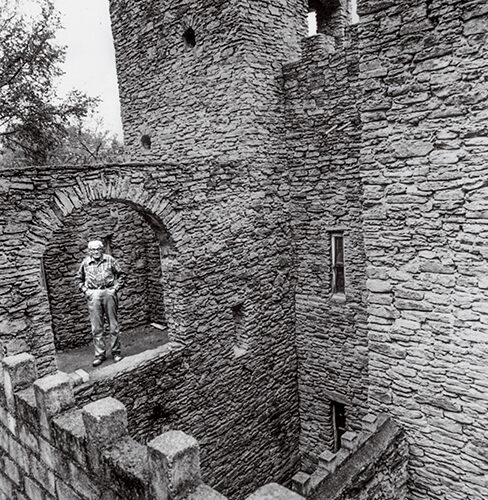Harry Andrews ’16, April 5, 1890–April 16, 1981
Knights are revered for their service to their country and chivalrous conduct. Harry D. Andrews, Class of 1916, embodied these values.
Andrews graduated from Colgate before joining the U.S. Army Medical Corps during World War I, eventually reaching the status of sergeant major.
One of 7,000 soldiers at Camp Dix, N.J., who succumbed to a deadly outbreak of cerebrospinal meningitis, Andrews was pronounced dead and placed in a morgue. But by some stroke of luck, a group of doctors taking bacterial cultures from his lifeless body decided to test a newly researched hormone — adrenaline — on the corpse. After the injection, Andrews’ heart started to beat again.
Though no one expected him to survive, the 89-pound Andrews gained his weight, along with his sight and mobility, back after just a few weeks. In the meantime, his fiancée, presuming him dead, married another man.
However, Andrews continued on. He traveled to the Chateau La Roche in southwest France, where he was stationed at an army hospital working as an administrator and teaching French to his fellow American soldiers. After the war, he built upon his Colgate architecture studies by enrolling at Toulouse University in France.
Andrews brought his enthusiasm for architecture back with him to the United States. In addition to his work as a reporter, teacher, and building inspector, he devoted much of his life to constructing a castle on a 1.5-acre parcel of land along the Little Miami River in Loveland, Ohio, which he dubbed Chateau La Roche after the French hospital in which he served during the war.
A devoted Sunday school teacher, Andrews had originally intended for this land to be a place where his students could camp and fish. But when the site’s original tents decayed, Andrews broke ground on his castle on June 5, 1929. Designed to emulate a 10th-century French Norman castle, it features a battle deck, lookout towers, a bomb shelter, and a dungeon. From their quarters in Chateau La Roche, Andrews and his Sunday school students formed their own brigade devoted to ancient values of chivalry: The Knights of the Golden Trail.
Both the inside and outside of Chateau La Roche, or “Rock Castle,” are built of stone. Following his retirement, Andrews furthered work on the castle, carrying 56,000 pails of stone by hand to complete the 8,000-ton structure. As a result, he received dozens of marriage proposals from admiring older women, though he remained single all his life.
On April 16, 1981, Andrews proved that he was not invincible, despite his revival from the dead some 63 years earlier. After suffering severe burns from a wayward trash fire, he passed away two days following his injuries.

